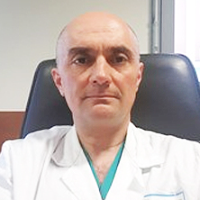The Effect of Residence Time of No-tunneled Hemodialysis Catheters on Infection and Thrombosis Outcome. Identification of CVC’s Time Cut-off
Published on: 4th March, 2024
Introduction: Permanent vascular access (arteriovenous fistula (AVF), arteriovenous graft (AVG)) is susceptible to acute events that reduce patency. The temporary central venous catheter (CVC) constitutes bridging therapy for primary vascular access dysfunction. The impact of “residence time” on the rate of dysfunction/thrombosis or infection remains to be explored.AIM: 1) To evaluate the impact of CVC residence time on outcomes (infection or Thrombosis/dysfunction) in consecutive temporary CVCs adjusted for the insertion site (upper site vs. lower site).2) To establish a cut-off resident time.Patients and methods: Seventeen prevalent hemodialysis patients with three consecutive CVCs are followed up prospectively in an observational study for a period equivalent to the permanence of the CVCs. The data is recorded at the beginning of the CVC time. The diagnosis of catheter-related bloodstream infection and thrombosis/dysfunction is made following the K-Doqi 2019 guidelines.Statistical analysis: Seventeen hemodialysis patients (51 CVCs) were included. The ‘CVC resident time’ of each individual patient ((i.e. βcoefficient (log-transformed)*AUC)) was determined using LMM and then inserted into multivariate Cox models to assess infection and dysfunction/thrombosis outcomes (Joint Models). The AUC was calculated at various baseline levels of CVC time (10th……50th percentile). The cut-off point for thrombosis in CVC time corresponds to the mean of the CVC time at the 30th percentile of all CVCs.Results: The CVC time is different for CVC’s site insertion and sequence. From the analysis of multivariate joint models, CVC resident time appears not to be significant for infection, but heterogenicity for the insertion site (ref3-4=upper site) is significant for the outcome of thrombosis/dysfunction. From the study of survival analysis, the free survival from outcomes by CVC site insertion appears to be significant for thrombosis/dysfunction. The average time of CVCs’ calculation at the 30th percentile is 14 days (cut-off).Conclusion: No tunneled hemodialysis Catheter (NTHC) residence time is considered not to be a risk factor for infection, but it represents a risk factor for lower access thrombosis. After the cut-off time of 14 days, the advantage of the higher NTHCs is lost.
Navigating Diagnostic Dilemmas in Subacute Subdural Hemorrhage: A Case Report
Published on: 26th March, 2024
In this case report a 64-year-old male patient with recent past medical history of head injury complicated by zygomatic arc fracture and mild subarachnoid hemorrhage is studied. He had been presented to the Emergency Department because of progressive neurological symptoms and neurological deficits in the physical examination that could have been indicating subcacute subdural hemorrhage. However, the patient was reluctant to undergo diagnostic imaging due to concerns about radiation exposure. After several explanations, a CT scan was done, which revealed a bilateral subacute subdural hematoma. Neurosurgical management was initiated and intravenous corticosteroid therapy was administered to reduce local edema. The challenge of this case is based on the subtlety of symptoms that might cause patients to delay seeking medical attention. Additionally, patient reluctance to undergo diagnostic tests can complicate management, emphasizing the importance of patient education and therapeutic alliance. Multidisciplinary management involving Neurology and Neurosurgery is crucial for optimal patient care in such cases. This report underscores the significance of effective communication and collaborative decision-making between healthcare providers and patients to ensure timely and appropriate management of complex medical conditions.

HSPI: We're glad you're here. Please click "create a new Query" if you are a new visitor to our website and need further information from us.
If you are already a member of our network and need to keep track of any developments regarding a question you have already submitted, click "take me to my Query."
















